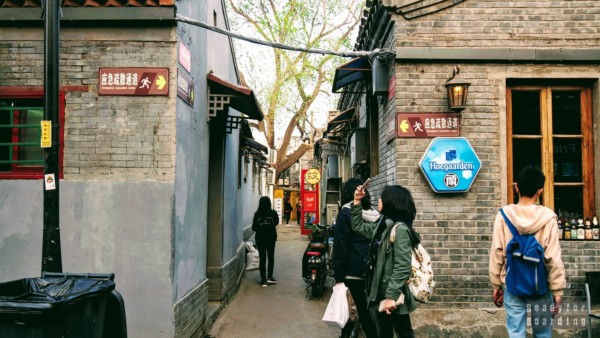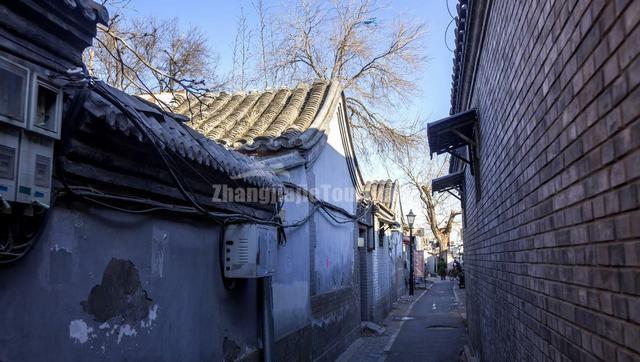# How to Navigate Beijing’s Ancient Hutongs: A Step Back in Time

Welcome to the heart of **traditional neighborhoods** in **Old Beijing**, where winding alleys tell stories of China’s rich **cultural heritage**. At jusha.travel, we love sharing tips to make your China journey unforgettable, and venturing into Beijing’s ancient hutongs is one of those magical experiences that transports you back in time. These narrow lanes, once the vibrant arteries of imperial life, offer an authentic glimpse into daily Chinese culture. Whether you’re a history buff, a food enthusiast, or someone intrigued by modern meets ancient, navigating the hutongs through **walking tours** allows you to connect with locals, savor street eats, and appreciate how technology seamlessly blends with tradition. So lace up your walking shoes and let’s dive into this timeless adventure!
## The Origins and History of Beijing’s Hutongs

To truly appreciate Beijing’s hutongs, we must rewind to their roots in the Yuan Dynasty (1271–1368), when they originated as networks of narrow alleys designed to house artisan residences known as **siheyuan**—courtyard homes that fostered community around shared wells. The term “hutong” itself might derive from the Mongolian word for “water well,” highlighting their role in community life back then. As Beijing became the imperial capital, these **traditional neighborhoods** expanded during the Ming and Qing dynasties, evolving into a dense grid centered around the Forbidden City. From about 410 hutongs in the Yuan era to over 6,000 by 1949, they became bustling hubs for merchants, officials, and craftsmen. Today, rapid urbanization has reduced this number to around 1,000 preserved hutongs, many now tourist spots that blend **Old Beijing** charm with modern renovations. This **cultural heritage** is a living tapestry, where ancient architecture meets contemporary art installations, reminding us how Beijing has grown from a medieval city to a global metropolis.
## Cultural Significance and Daily Life in Hutongs

Hutongs are more than streets; they’re living manuscripts of Beijing’s soul, where **cultural heritage** unfolds in every corner. Structured around **siheyuan** compounds with rooms facing an inner courtyard, these homes symbolize familial harmony and privacy—elements rooted in Confucian values. Daily life here remains remarkably authentic: residents gather for tai chi in shaded spots, practice calligraphy with ink brushes, or play mahjong under the watchful eyes of elders. Street food vendors sell baozi (steamed buns) and yangrouchuan (lamb skewers), reflecting the fusion of Han Chinese traditions with influences from across China. As you wander these **traditional neighborhoods**, you might catch a glimpse of woodworking artisans crafting toys or families preparing for festivals like the Mid-Autumn Festival, underscoring the hutongs’ role in preserving **Old Beijing** culture. This blend of old-world living and subtle modern touches, like LED-lit signage on historical gates, shows how China’s technology enhances rather than erases its rich past.
## Practical Navigation: Tips for Walking Tours

Navigating Beijing’s hutongs is best done on foot, allowing you to soak in the sensory details of **Old Beijing**. **Walking tours** are ideal for immersion, with options ranging from self-guided apps (using WeChat or Baidu Maps for AR overlays of hutong history) to local rickshaw rides or guided group tours. Start at Nanluoguxiang, the oldest and most vibrant alley, where boutique shops, cafés, and artisan stalls showcase **cultural heritage**. From there, head to the Drum Tower area for stair-climbing views and Yandaixie Street for picturesque alleys lined with art galleries. Pro tips: Go early morning to see locals practicing tai chi or buying fresh produce from bicycle vendors—it’s quieter and more authentic. Carry a reusable water bottle and snacks, as cafés are plentiful but embrace the street food scene for true **traditional neighborhood** vibes. For tech-savvy travelers, download translation apps to chat with hutong elders; many share stories of their ancestors’ lives amid the maze-like paths. Remember, these alleys aren’t for speeding—slow down, get lost intentionally, and let the **cultural heritage** envelop you.
## Hidden Gems, Food, and Cultural Experiences

Beyond the well-trodden paths lies a treasure trove of hidden gems in Beijing’s **traditional neighborhoods**, revealing layers of **cultural heritage**. Zhuanta Hutong, at around 800 years old, is named after an ancestral pagoda and hosts art exhibitions in restored courtyards. Dongjiaomin Lane, the longest hutong, boasts colonial-era embassies and quiet gardens perfect for reflection. Food is integral here—in **Old Beijing**, savor jianbing (savory pancakes) from vendors whose recipes date back generations, or join a dumpling-making workshop in a siheyuan, learning techniques passed down through dynasties. Pair your explorations with visits to hutong teahouses for gongfu cha (ceremonial tea drinking), a ritual embodying mindfulness and social ties. Technology adds flair, too: some tours use VR headsets to virtually explore historic hutong events, blending ancient customs with modern innovation. During evening wanderings, you’re in for lantern-lit alleys and spontaneous street performances, making these **walking tours** not just navigations but journeys into the heart of China’s culinary and cultural soul.
## Preservation Challenges and the Future Outlook

While Beijing’s hutongs showcase time-honored **cultural heritage**, they’re not without challenges. Urban development has demolished over half since the 1950s, threatening the remaining **traditional neighborhoods** with real estate booms that convert courtyards into luxury apartments or shopping malls. Preservation efforts focus on sustainable tourism: local governments restrict demolition in key areas and promote eco-friendly renovations, like solar-paneled siheyuan roofs. Some hutongs have embraced “old-meets-new” vibes, hosting digital art festivals or cultural tech hubs where VR experiences retell dynastic tales. For travelers, this means tangible impacts—we can support by choosing ethical tours or homestays in preserved areas. Looking ahead, as China advances technologically (think AI-powered waste management in hutongs), these alleys could become models for global heritage conservation. By prioritizing **walking tours** led by knowledgeable guides, you contribute to keeping **Old Beijing**’s spirit alive for future generations.
## Embracing the Hutong Experience

Navigating Beijing’s hutongs is more than sightseeing; it’s an intimate step back into time that connects you with the city’s beating heart. As you meander through these **traditional neighborhoods**, you’re not just traversing alleys—you’re bridging centuries, uncovering layers of **cultural heritage** that define **Old Beijing**. Embrace the unexpected: strike up conversations with locals over shared teas, discover art in unexpected courtyards, or let the rhythm of daily life guide your **walking tours**. Whether you’re a solo traveler seeking solitude or part of a group chasing stories, these experiences remind us why China captivates the world. At jusha.travel, we believe journeys like this enrich not just the mind, but the soul. For more insights into Beijing’s wonders, check out our related articles like [Best Places to Visit in China](https://jusha.travel/best-places-to-visit-china/), [Why Beijing’s Forbidden City is a Must-See](https://jusha.travel/why-beijings-forbidden-city-is-a-must-see-in-2025/), [How China’s Night Markets Offer Food, Fun, and Culture](https://jusha.travel/how-chinas-night-markets-offer-food-fun-and-culture/), [Hiking Trails in China Guide](https://jusha.travel/hiking-trails-china-guide/), [Transportation in China: A Comprehensive Guide](https://jusha.travel/transportation-in-china-guide/), and [Exploring China Festivals](https://jusha.travel/exploring-chinese-festivals-culture/). Have you explored Beijing’s hutongs yourself? Share your favorite memories or tips in the comments below, and don’t forget to visit jusha.travel for more inspiring China travel content! Safe travels!

